Some years ago we went to a travel fair in Oslo, it is always nice to talk to the different people at different stands, get some gossip on where to go and what destinations are up and coming. And since Ørjan was in the industry back then, it was a place to meet new contacts from all over Europe who were all in the travel industry.

We had been looking for a Greek destination for a while, a couple of times we had visited one of the Greek islands, but we never found “our” island. We asked the Greek tourist board representatives where to go if we did NOT want discos, British pubs, German wiener vendors, no club Med, no beach lounge café del Mar lounges, no clubs for kids under 12 and as few Scandinavians as possible, and preferably a charter plane from Oslo. We also wanted nice small beaches and nice small restaurants with that great yummy Greek food. After a Greek huddle and a small discussion, the answer came: you should go to Karpathos!

It had just started out as a destination in the Apollo Travel’s charter programme, and they promised that the island was not developed too much, and that there was still a lot of authenticity, plenty of beaches and nice little tavernas. Sounded too good to be true but we booked our first week and it has forever after been “our” little Greek island, a little island no more than 50 kilometres long and 11 kilometres at the widest.
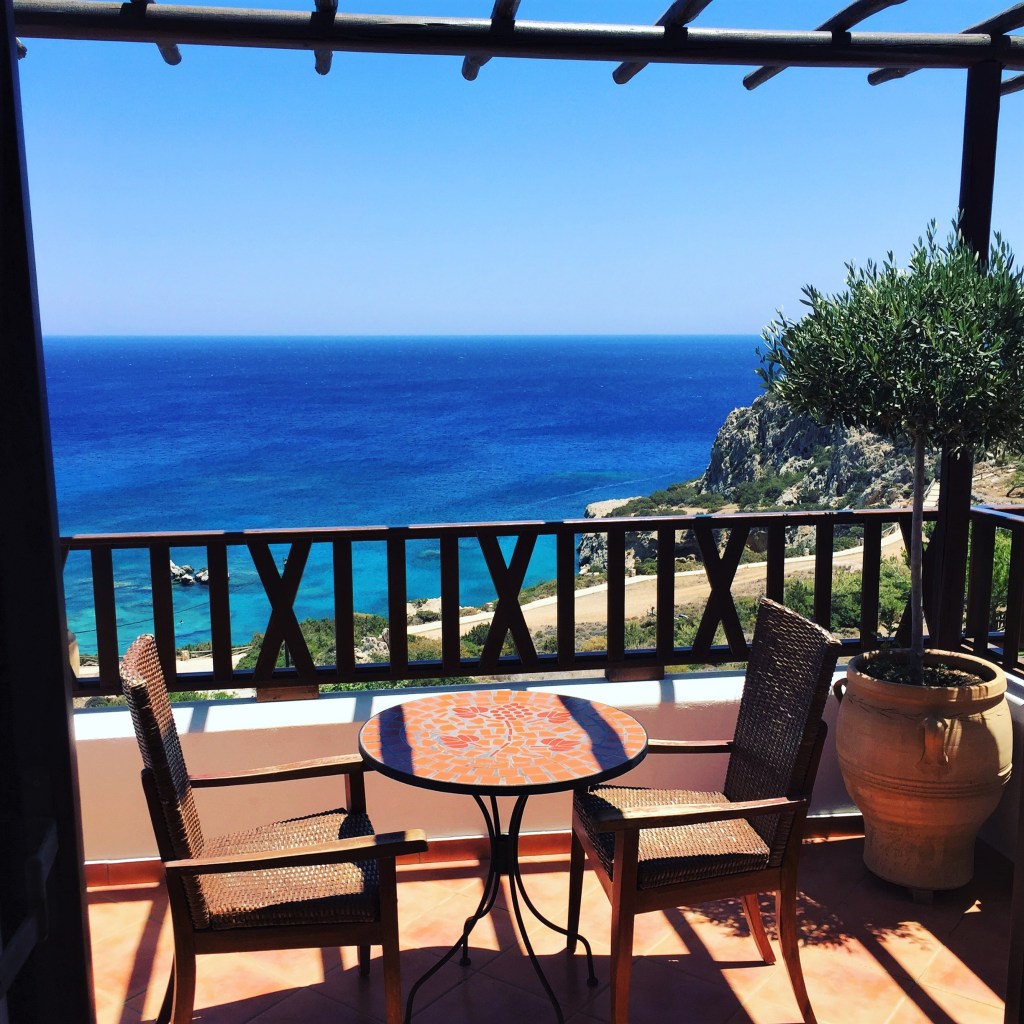
Karpathos is the second largest Greek Dodecanese island in the south-eastern Aegean Sea. Because of its remote location, Karpathos has preserved many peculiarities of dress, customs and dialect, the last resembling those of Crete and Cyprus. The population is no more than a bit over 6000 people, of course this balloons to around 20 000 in high season during summer. The island was connected with Rhodes in the ancient times, and it is mentioned in Homer’s Iliad. The island has a rather colourful and varied past. After the division of the Roman Empire in 395 AD it fell under Byzantine rule. In the early 1300s it was given to Italian rulers, first to Genovese corsairs, then to the Venetian Cornaro family. The Cornaro controlled Karpathos until 1538, when it passed into the possession of the Ottoman Turks. During the Greek war of independence from 1821-1822 the island rebelled but afterwards it again fell under Ottoman rule. The Ottoman rule ended in 1912 when the Italians invaded and occupied the island and the rest of the Dodocanese islands during the Italo-Turkish wars of 1911-1912. It remained Italian until after the Second World War when Italy ceded the islands to the Greeks and the island together with all the other Dodecanese islands joined the Kingdom of Greece on the 7th of March 1948.

Another thing we noticed when we visited the first time was that many of the staff in the hotels, restaurants and small bars all spoke fluent American, with a Brooklyn accent. We got curious and had to ask why this was, and they told us that in the late 1940s and 1950s due to economic problems after WWII, many Karpathians emigrated to the U.S. eastern seaboard cities. And that is why Karpathos today has a significant Greek American constituent who have returned to the island and invested heavily in the hospitality industry and the general infrastructure of the island. The people we met who worked in the hotels and restaurants were all living in the U.S. in winter and came to work in their family’s business for summer “holidays” and to see their families of course.
Beaches
The beaches of Karpathos island can be divided into four large groups: the beaches on the east coast are smaller and gravelly but with less wind than the beaches on the western part.
The beaches of the southern part of the island, near the airport, are made of fine white sand. If you find the “secret” dirt road running behind the airport, it will take you to one of the most beautiful beaches in the Greek islands, Paralia and Diakoftis beach. Just stunning and with few people they are worth a visit any day of the week. It can be quite windy in Karpathos, and that is perhaps why there is terrific kiting and windsurfing in Agrilaopotamos beach, not far from the airport.
The sandy beaches on the west coast are the most exposed to the Meltemi (Meltemi are the strong, dry north winds of the Aegean Sea). The stunning village and beach of Lefkos is however the best lunch stop ever if you rent a car for one day and drive around the island to explore. The main beach is quite rough if the waves and wind is up, but in the sheltered natural harbour of the village there is swimming to be had all day no matter how much wind there might be on the day.
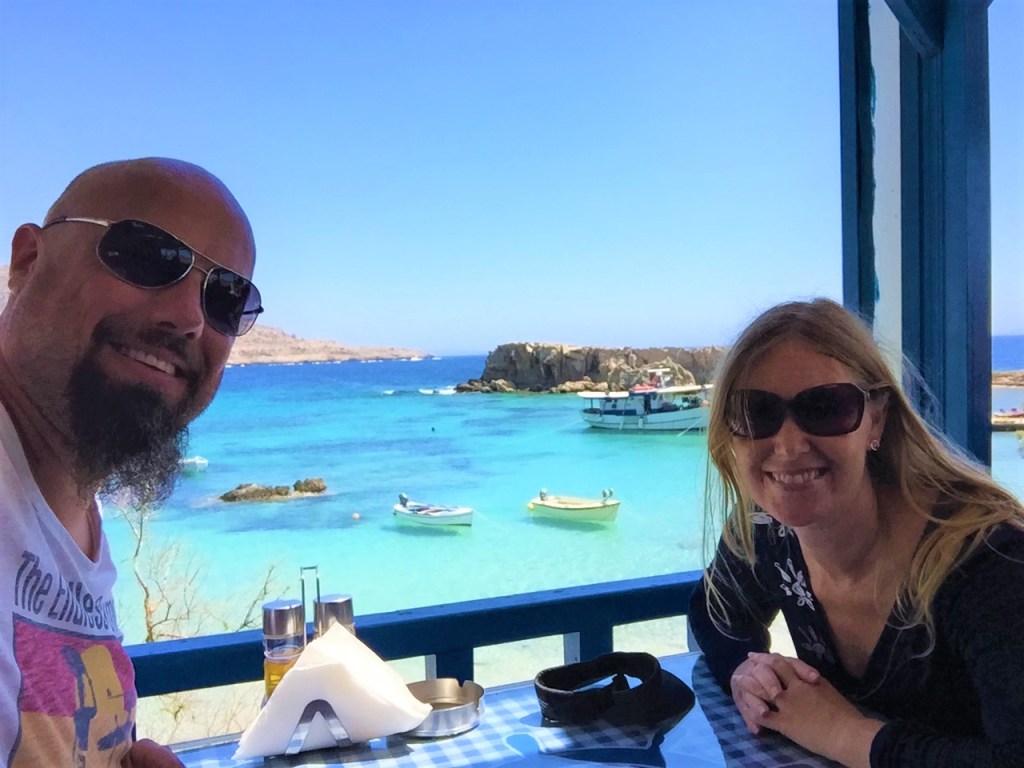
The beaches of the north of the island, accessible only by sea and partly by jeep.
Amoopi
On all our visits we have stayed in Amoopi bay, situated in the middle between the airport and the main town of Pigadia. Amoopi bay has a small smattering of hotels and apartment lets but nothing big, no tall developments, just the right number of hotels for such a place. We have been patrons of the Aegean Village Hotel for the last stays in Karpathos. Great little hotel, with stunning views over the bay and a short stroll down a steep hill to the beach. And it needs to be said that handicap friendly Amoopi is not, to get down to the beaches you need to negotiate some steep tracks that are not for the frail and walking impaired. Kastelia beach is just down front from the hotel, a small beach with beach chairs and umbrellas for rent, pure paradise with a nice rocky beach and no more than 30-40 people can fit there.
If you walk east on the coastal track you will soon be at Amoopi beach, where the first small coves are more or less nude beaches (not officially we think, but each cove can only accommodate two people, so it is a good place to “hide” a little). The main beach is small pebbles and sheltered for the wind and the waves, this is a bigger beach but not huge by any standards. Past our favourite lunch bar, Calypso, is the sandy Big Amoopi beach, or some call it Golden Beach as well. Very nice sand, crystal clear water and the only real beach bar is situated here. We prefer the calmness of Kastelia, the short walk to Calypso for lunch, and the stroll back to the beach again with a cool and frothing iced coffee. In the evening we would walk the short uphill walk to the Four Seasons Restaurant for freshly baked bread and Greek souvlakis and gyros, washed down with Mythos and Ouzo.
Excursions and Daytrips

We tend to do one day trip per visit, rent a car and drive around the island, maybe rent the car for two days and use one day at the beach by the airport. We suggest, first to check that the car (or moped) has gas, there is only one gas station on the island, and that is in the main city. We learned this the hard way the first time we visited, we rented scooters, and almost ran out of gas on the other side of the island. Thankfully, we met a local with a jerrycan of gas and a smile, we paid him double the normal price, out of gratitude.
The island is extremely hilly, and the roads are very narrow and very very very full of corners and switchbacks. Do not let this deter you, it is one of the nicest drives you will ever have. Head north from the main town of Pigadia (you will most likely pick up your car here) and drive up into the hills. There are some very stunning beaches on the way, check out the site Greeka for further directions.

After plenty of hair-raising driving through epic landscape the road will split, continue north along the spine of the island to the small settlement of Olympos. Clinging to the mountainside the town of Olympos was built as a refuge to the citizens of nearby village Vrykous when Saracen pirates threatened the settlement. The villagers of Olympos kept the local dialect and the traditional costume due to the isolation of this place from the rest of Karpathos. The traditional style of the village attracts many tourists nowadays. The village is very quaint, small streets and narrow alleyways with spectacular views of the sea hundreds of feet below. Many small windmills dot the ridges of the mountain surrounding the village, and it seems like a logical thing to harness the wind in such an exposed place.
Backtrack a few miles to where the road split and head down to the western coast for some food and a swim in Lefkos Beach. It is a beautiful natural harbour with pristine white sand in front of the tavernas of the small main street. Just sitting at the gyros place by the water, having a delish cheap little bbq chicken in a pita bread with tzatziki is a small piece of paradise right there. We love it.
So that is the tale of “our” Greek island, a small piece of heaven, not too developed and not too big, a Goldilocks island.
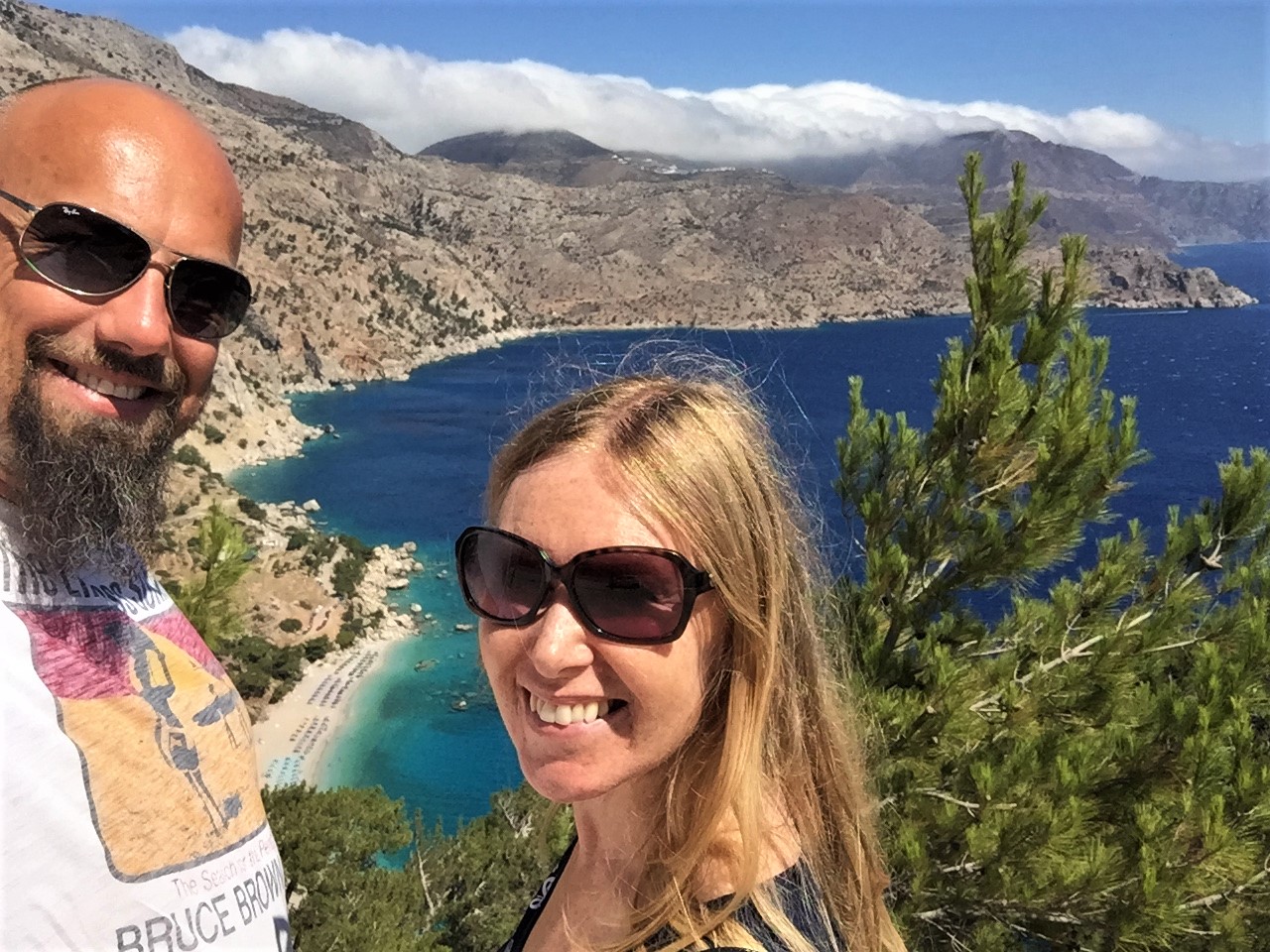

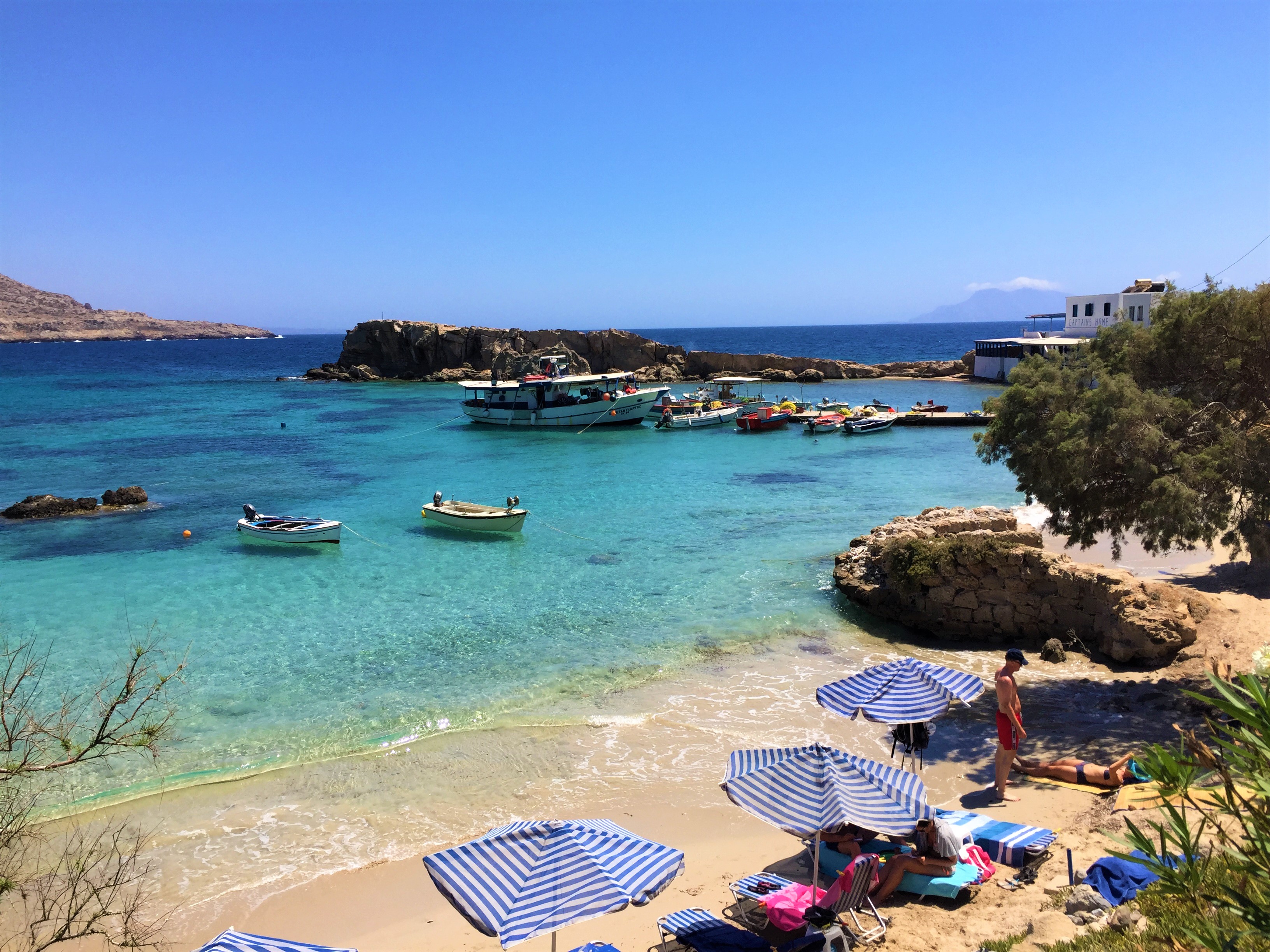
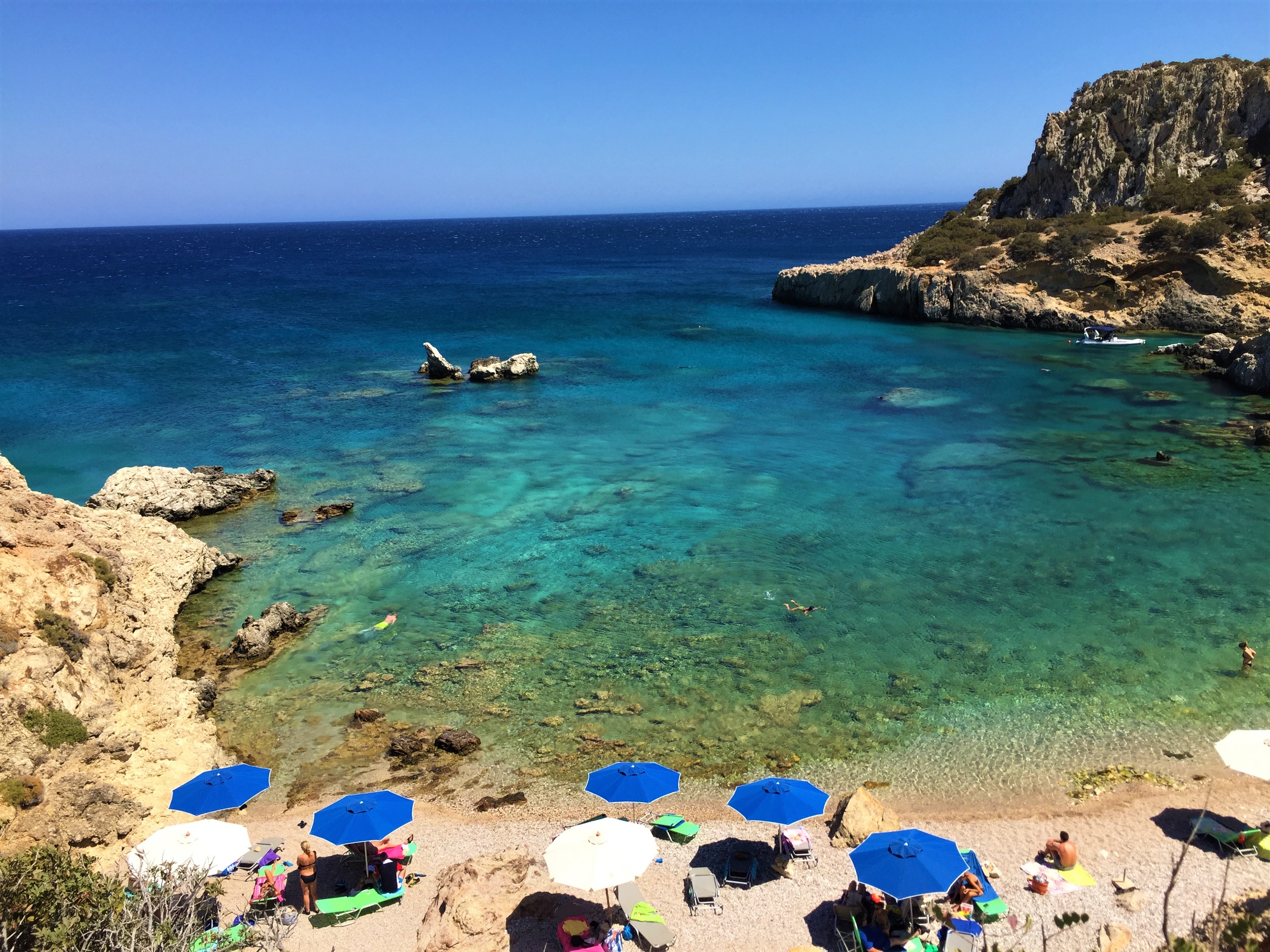
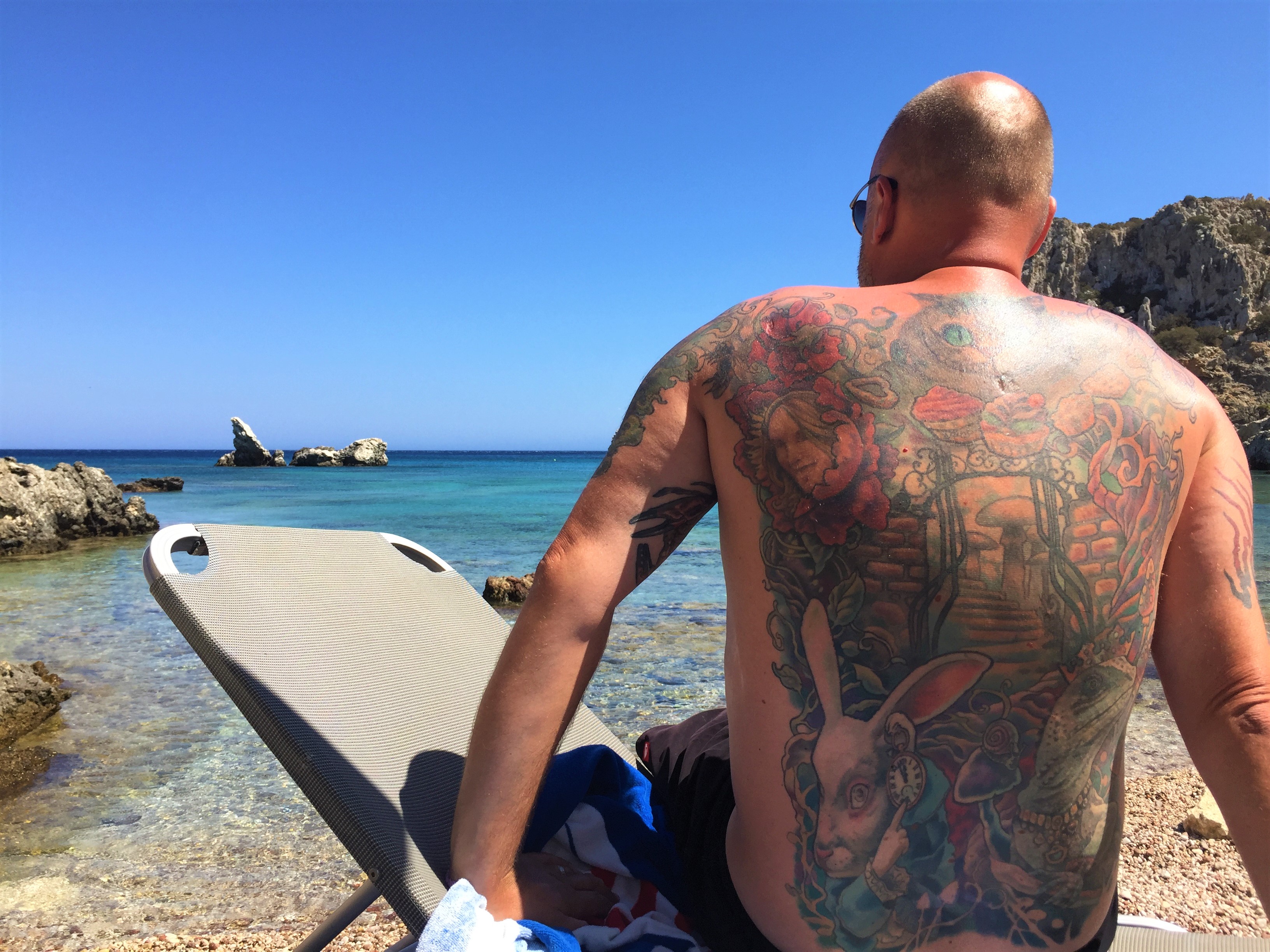
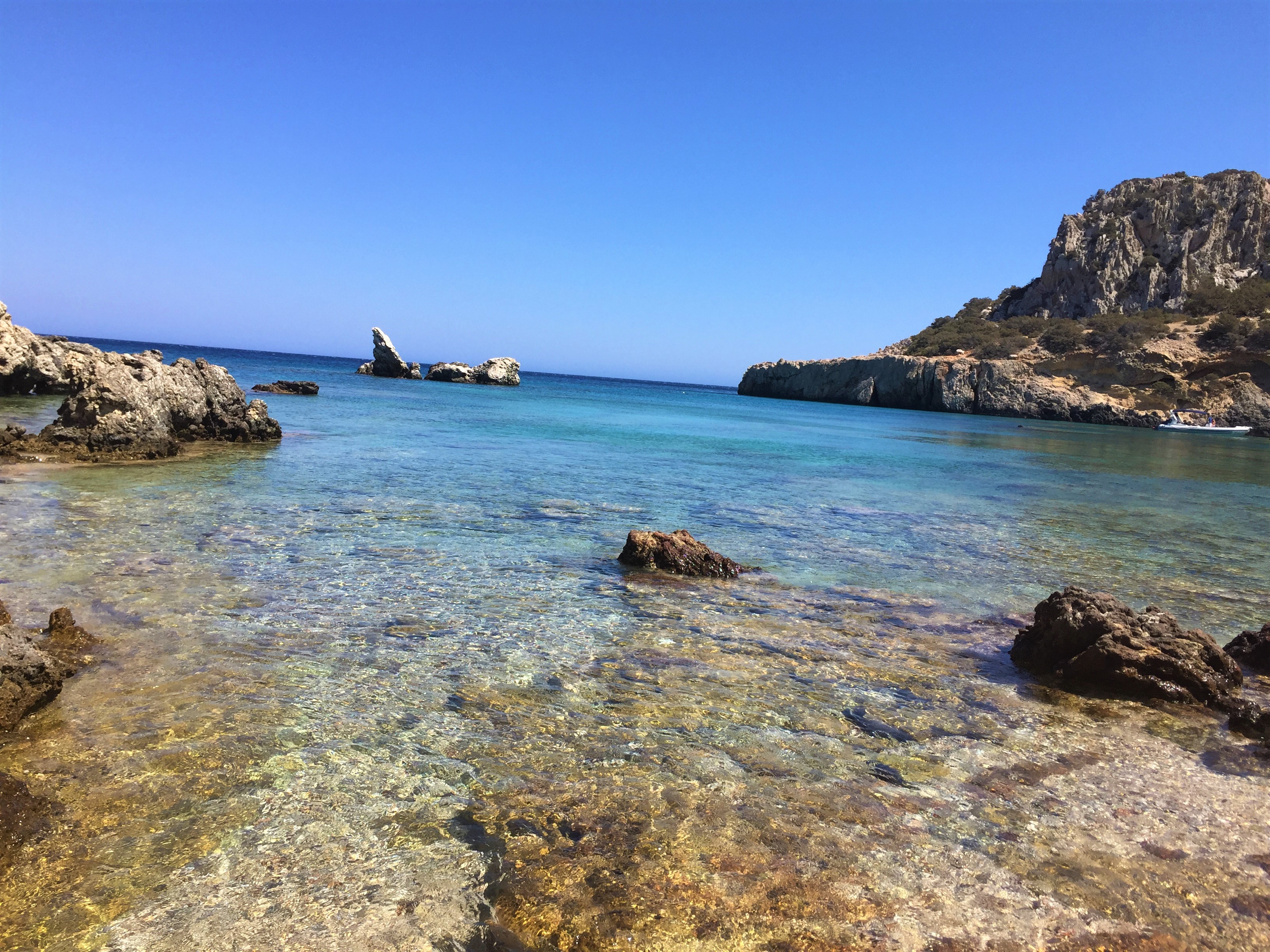
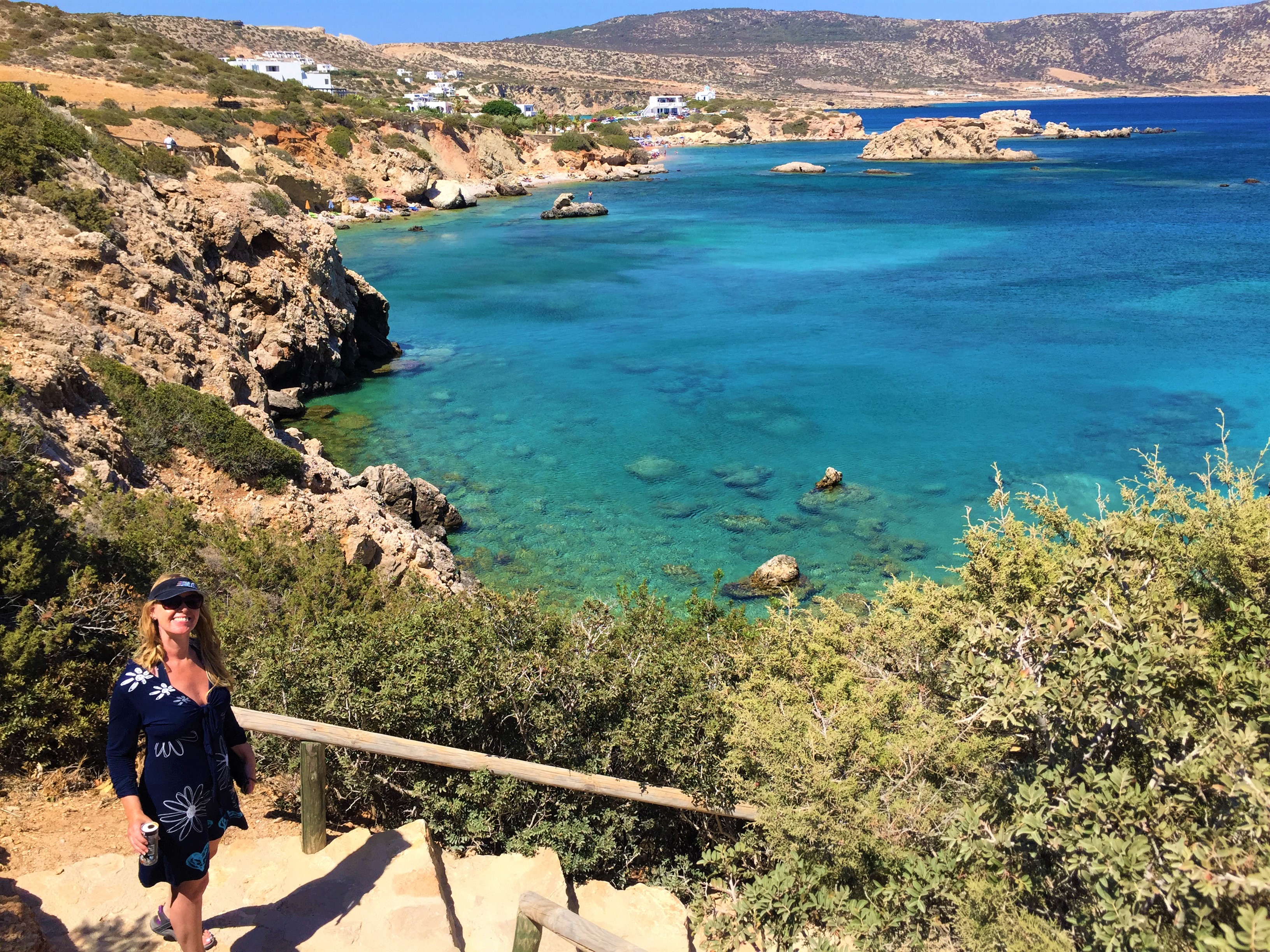
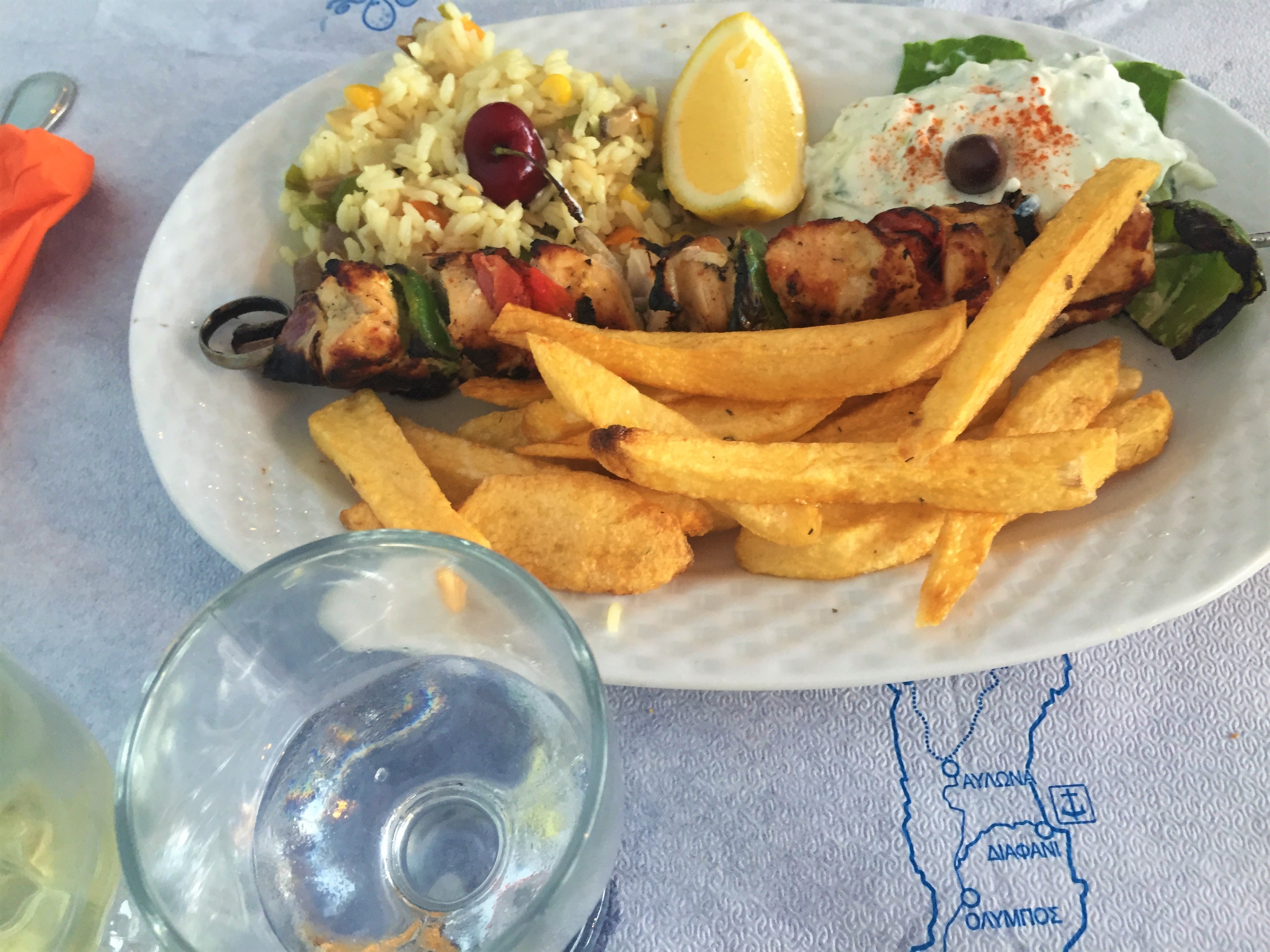
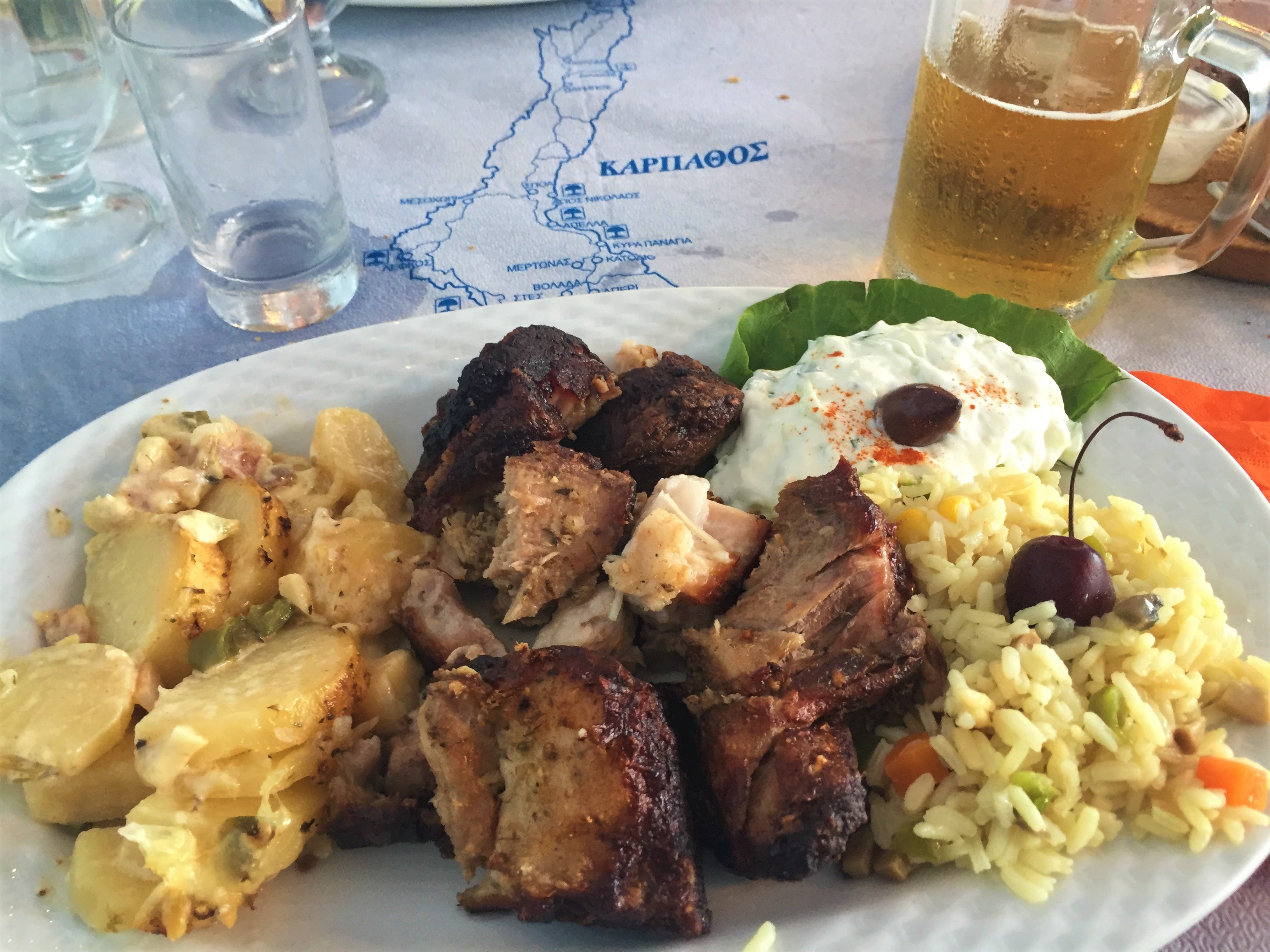
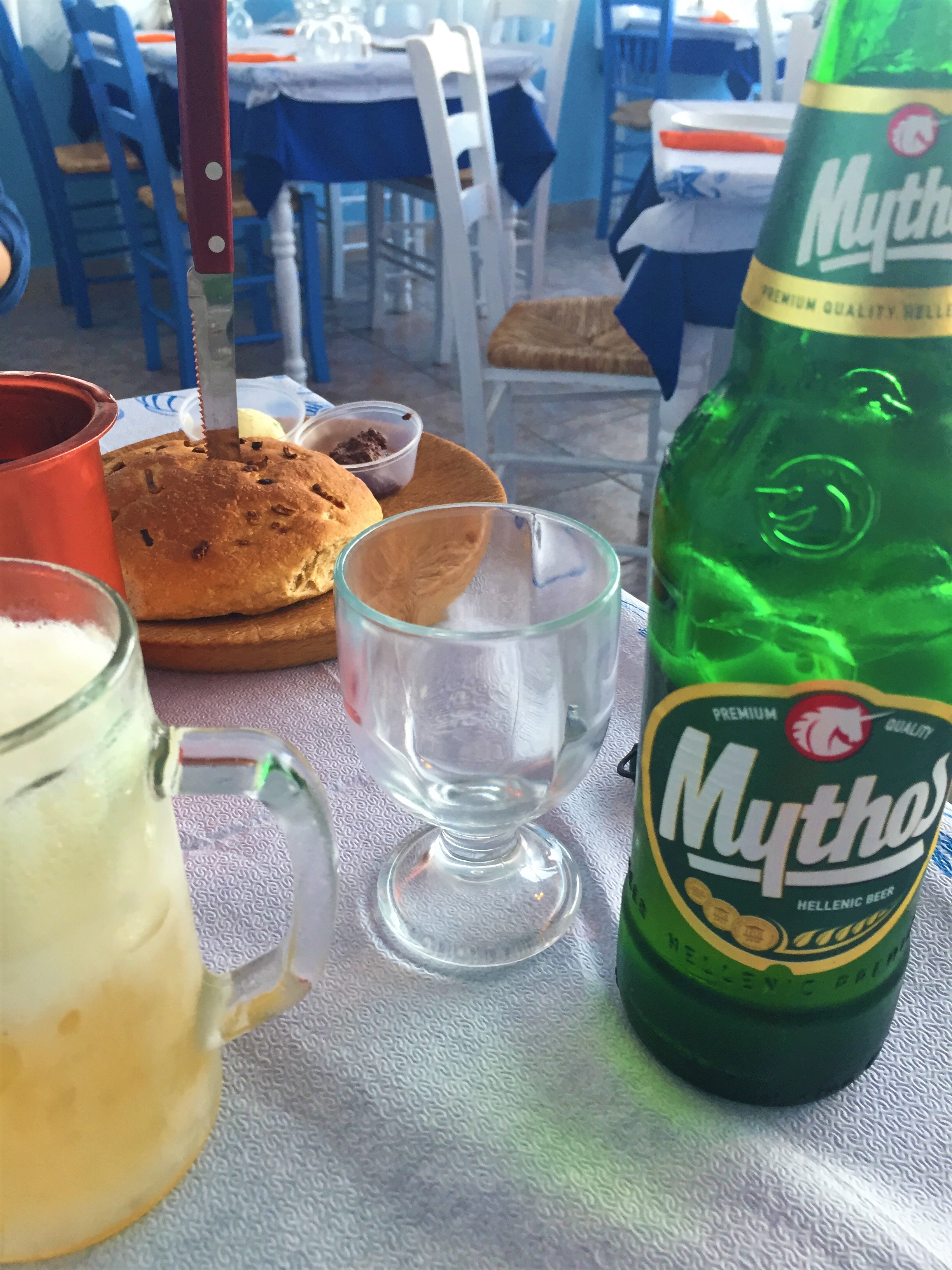
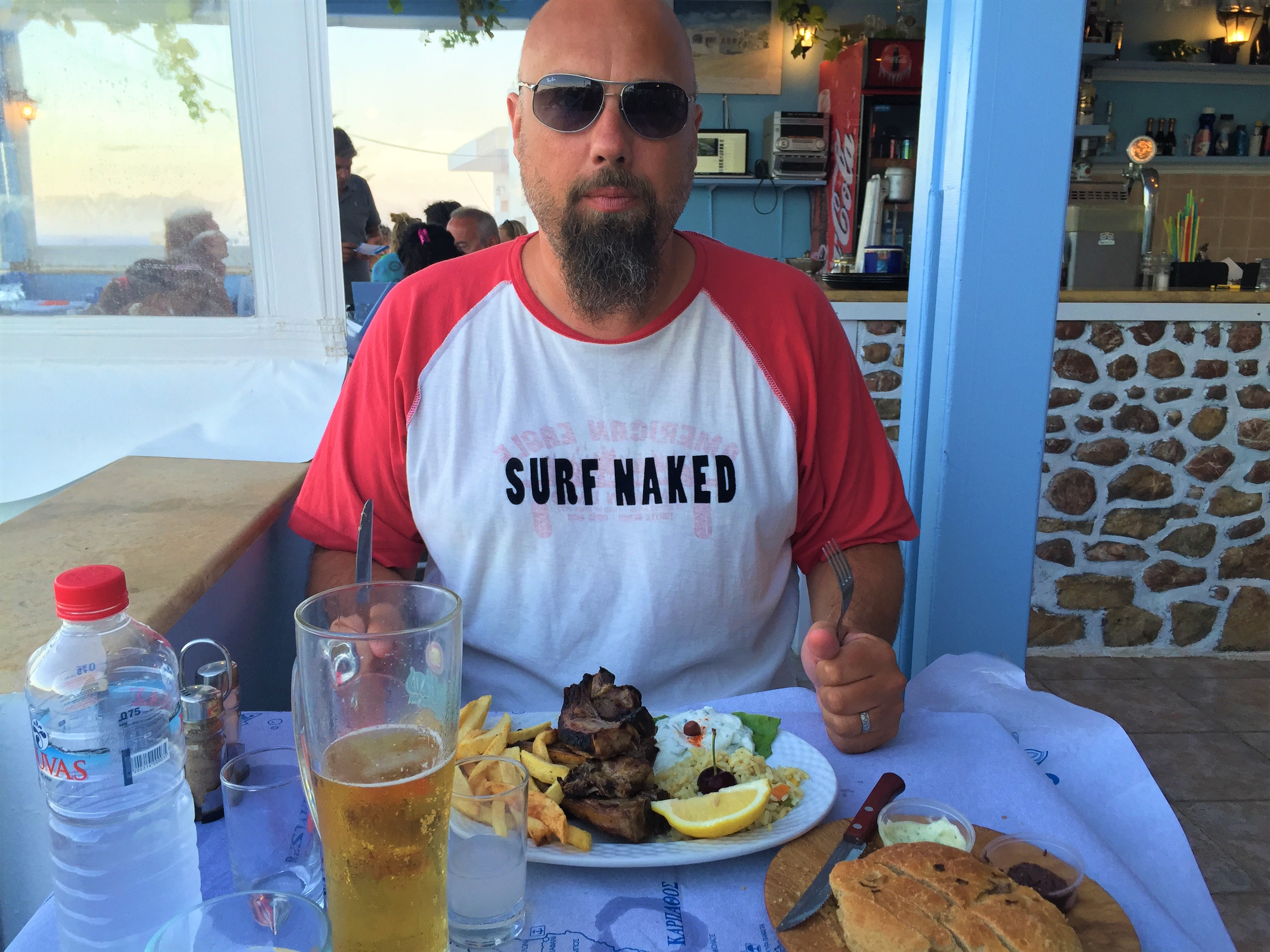
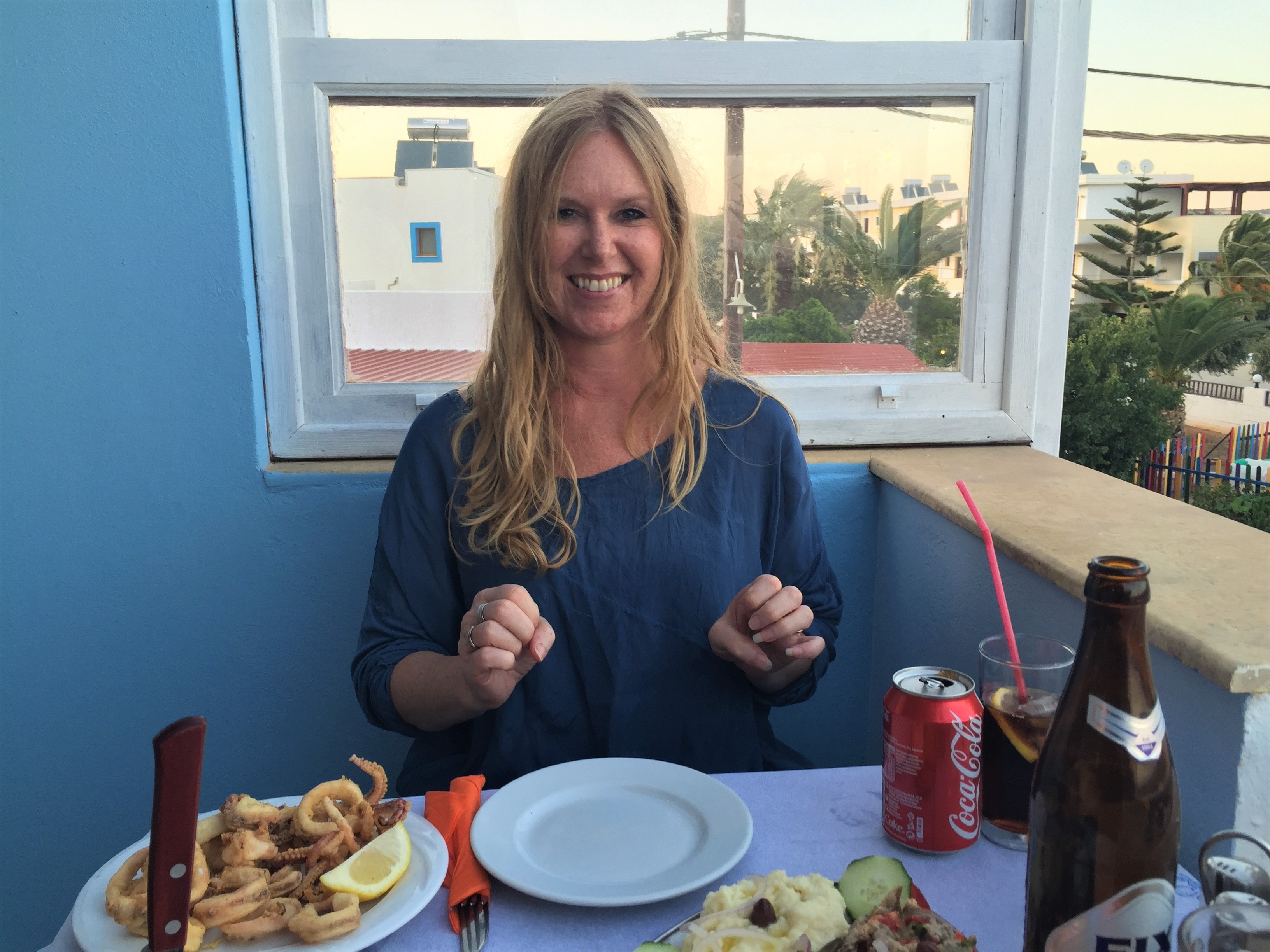
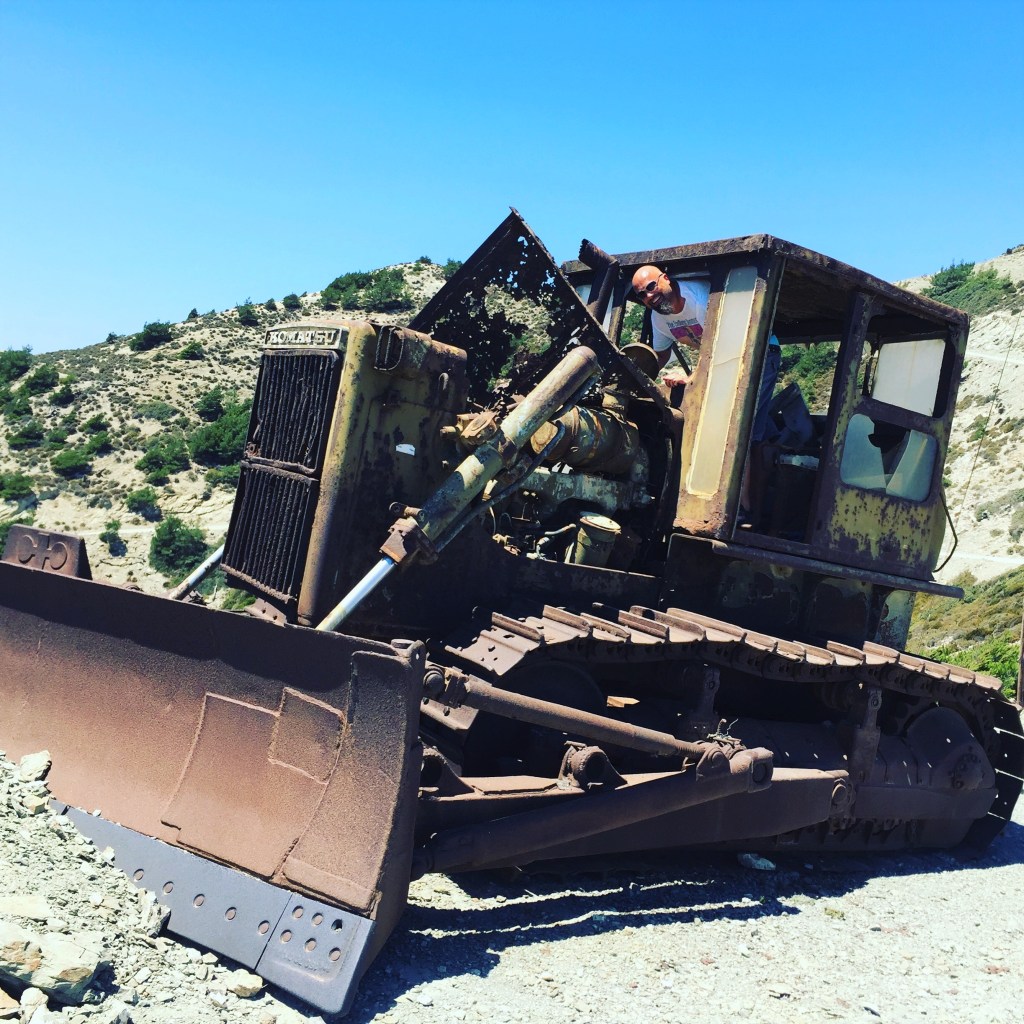

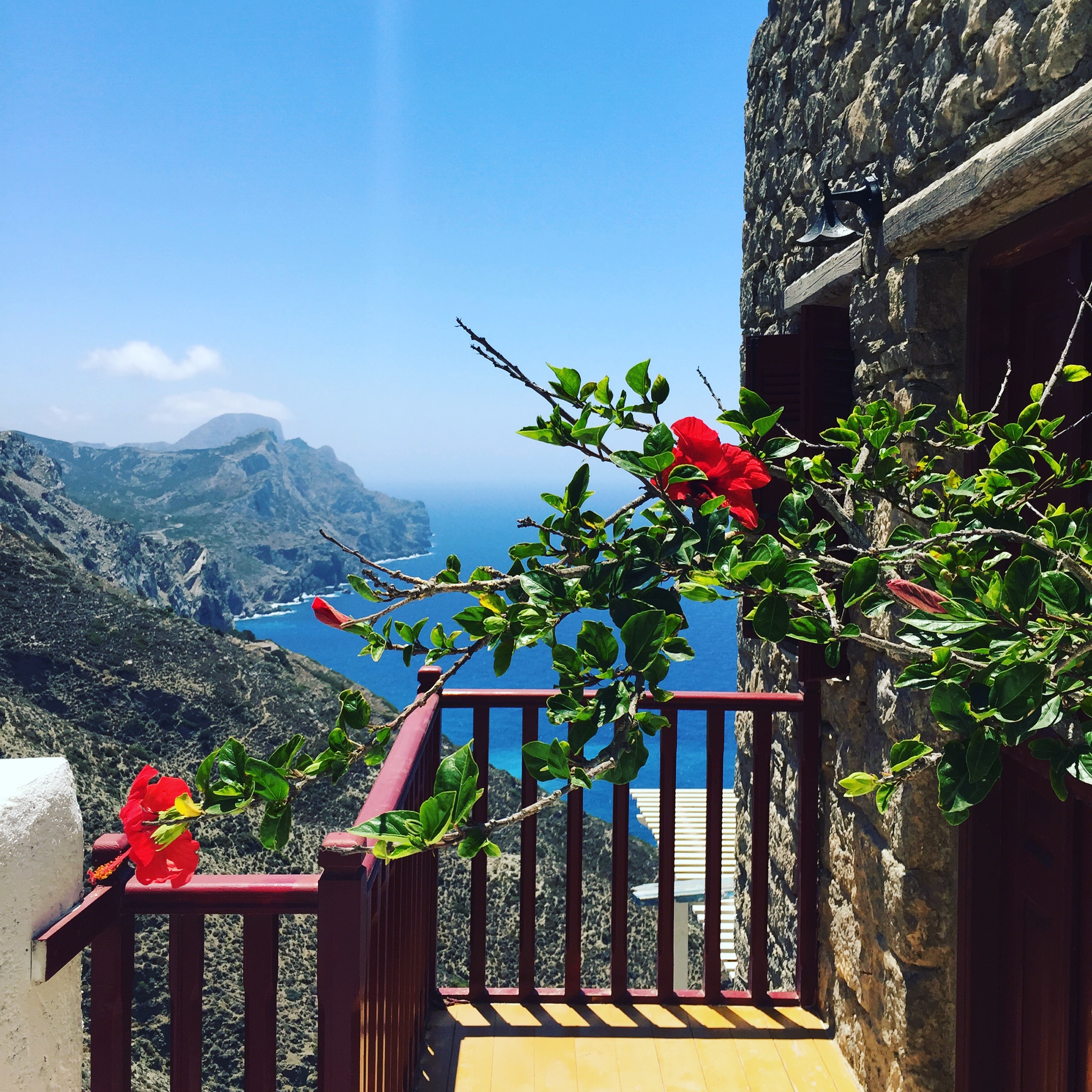
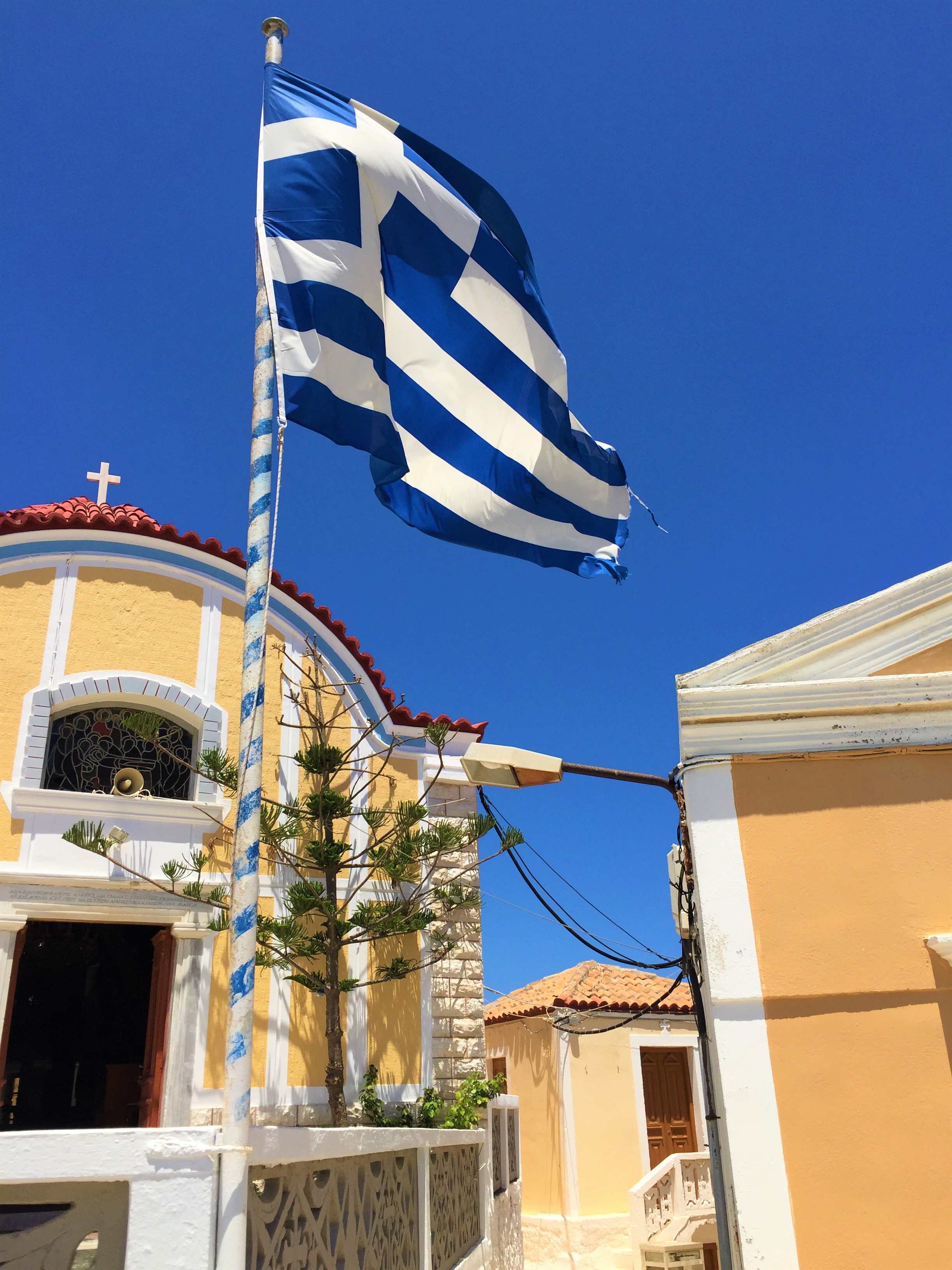
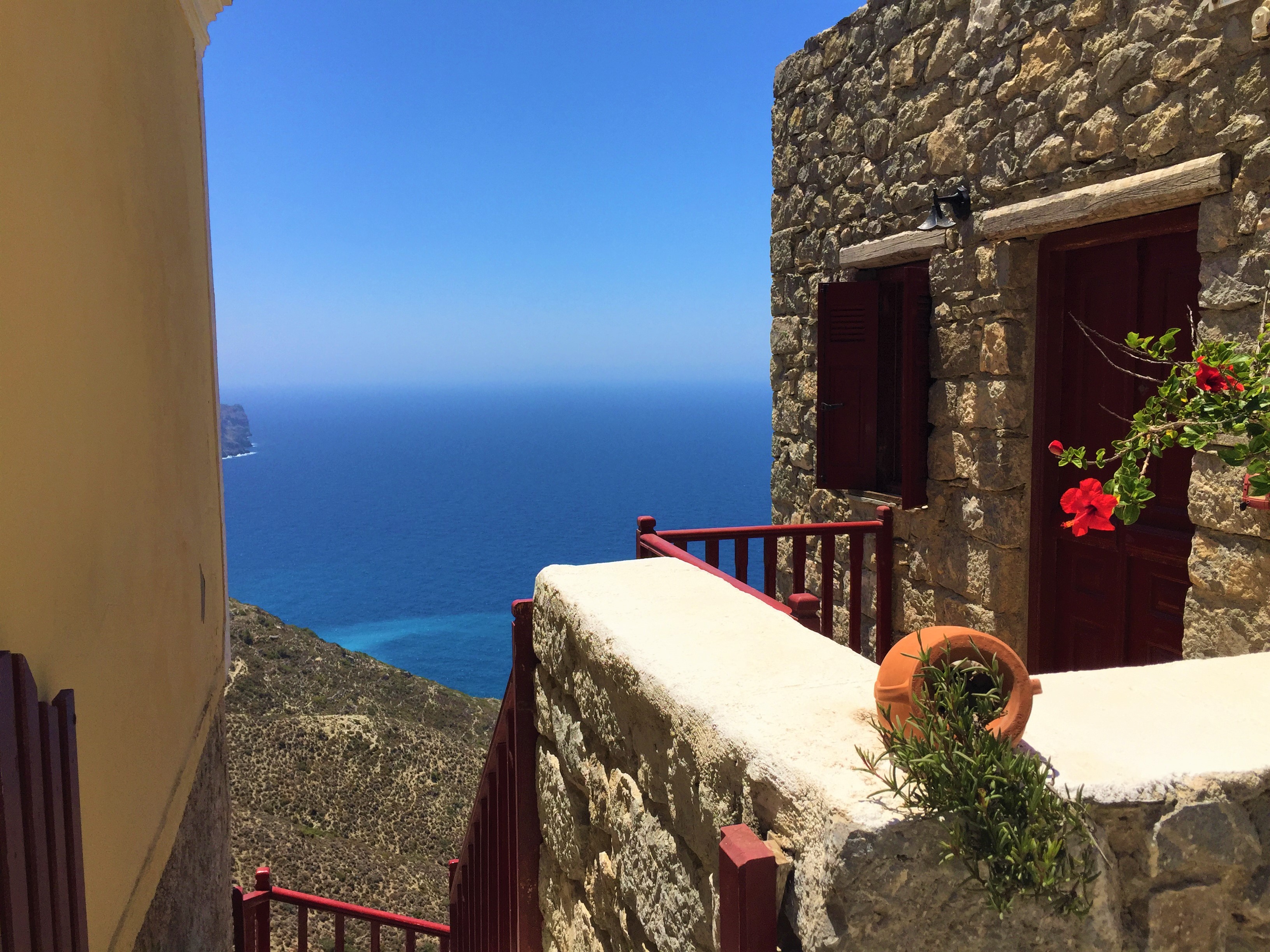
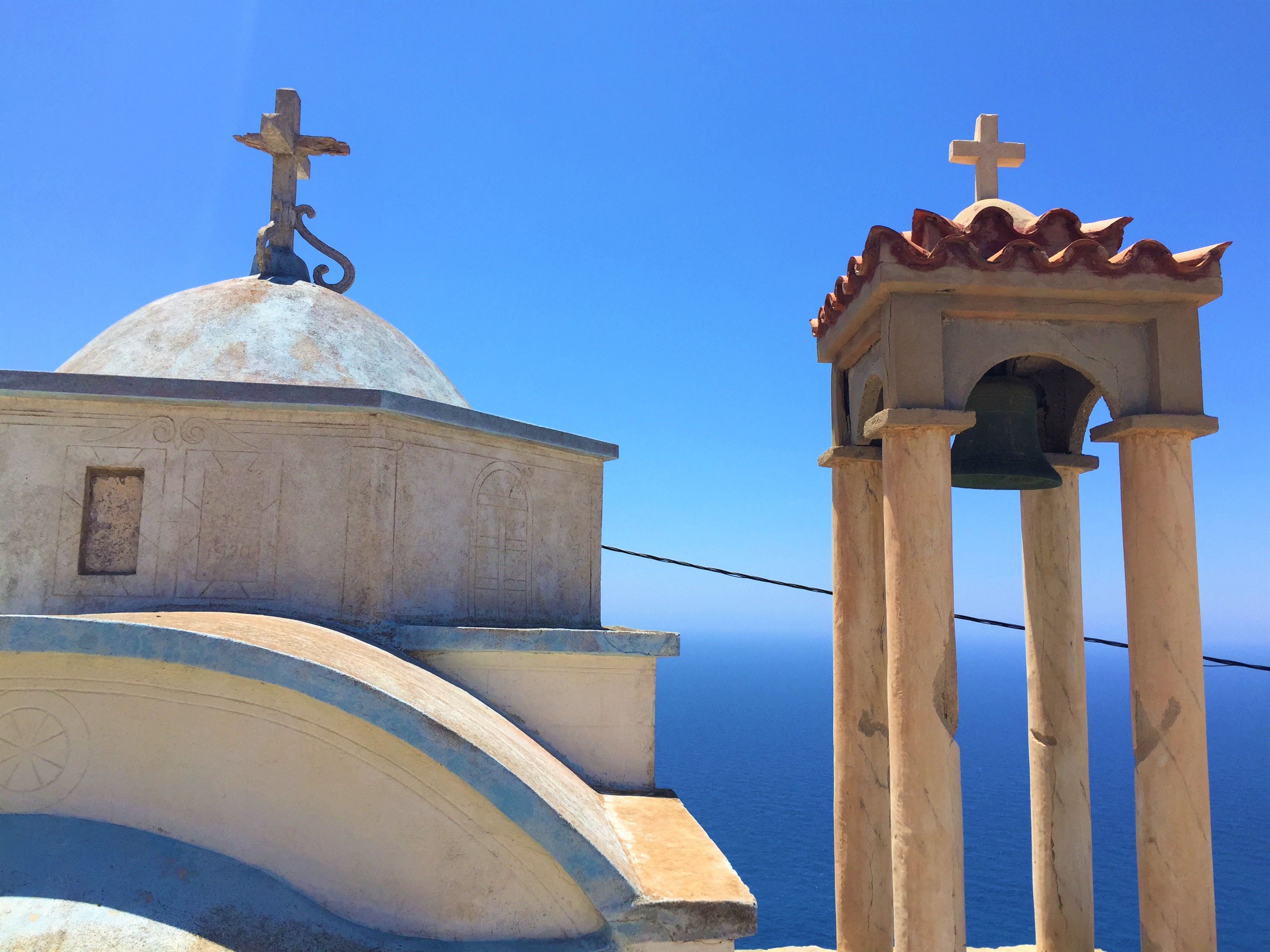
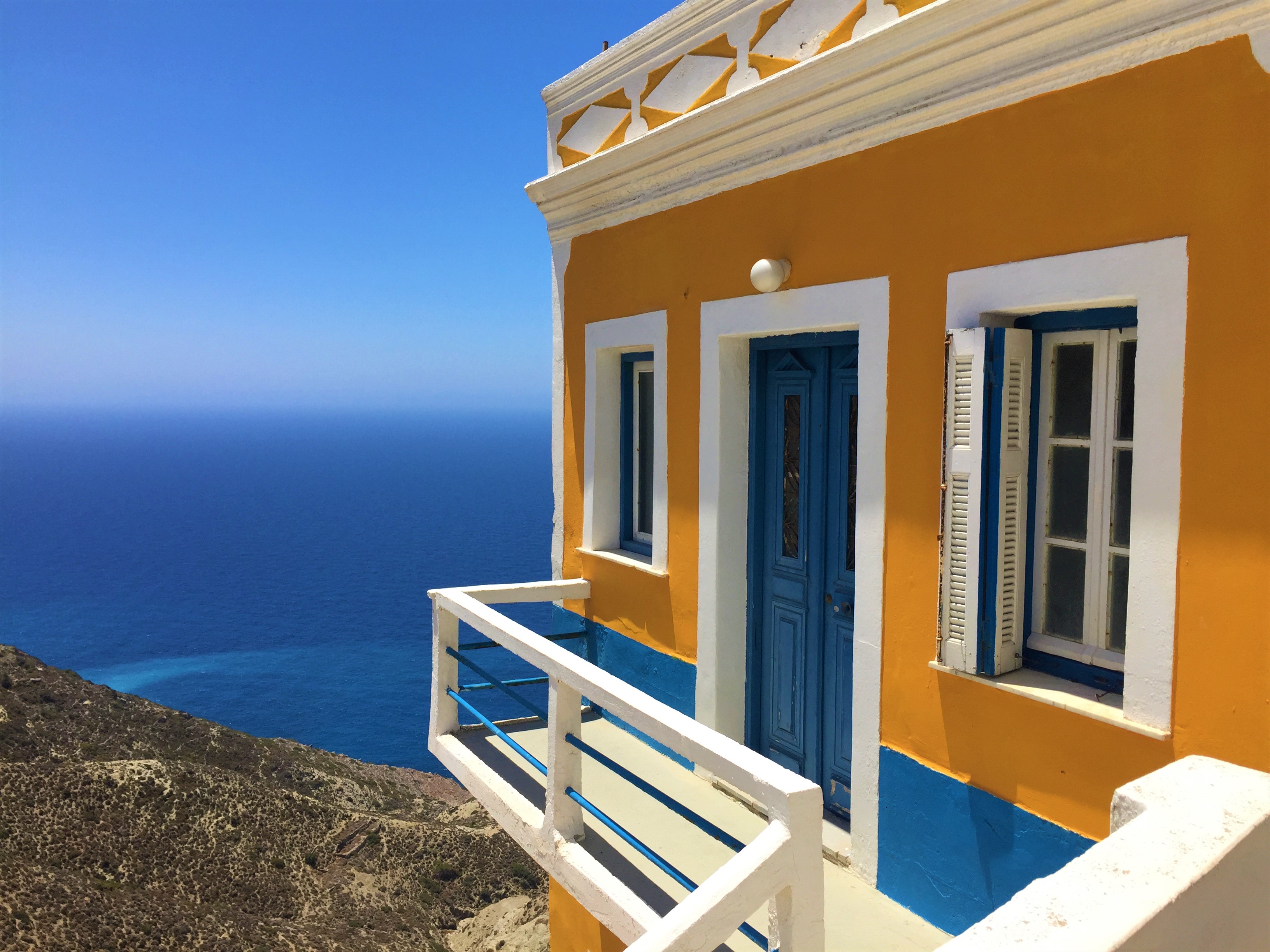
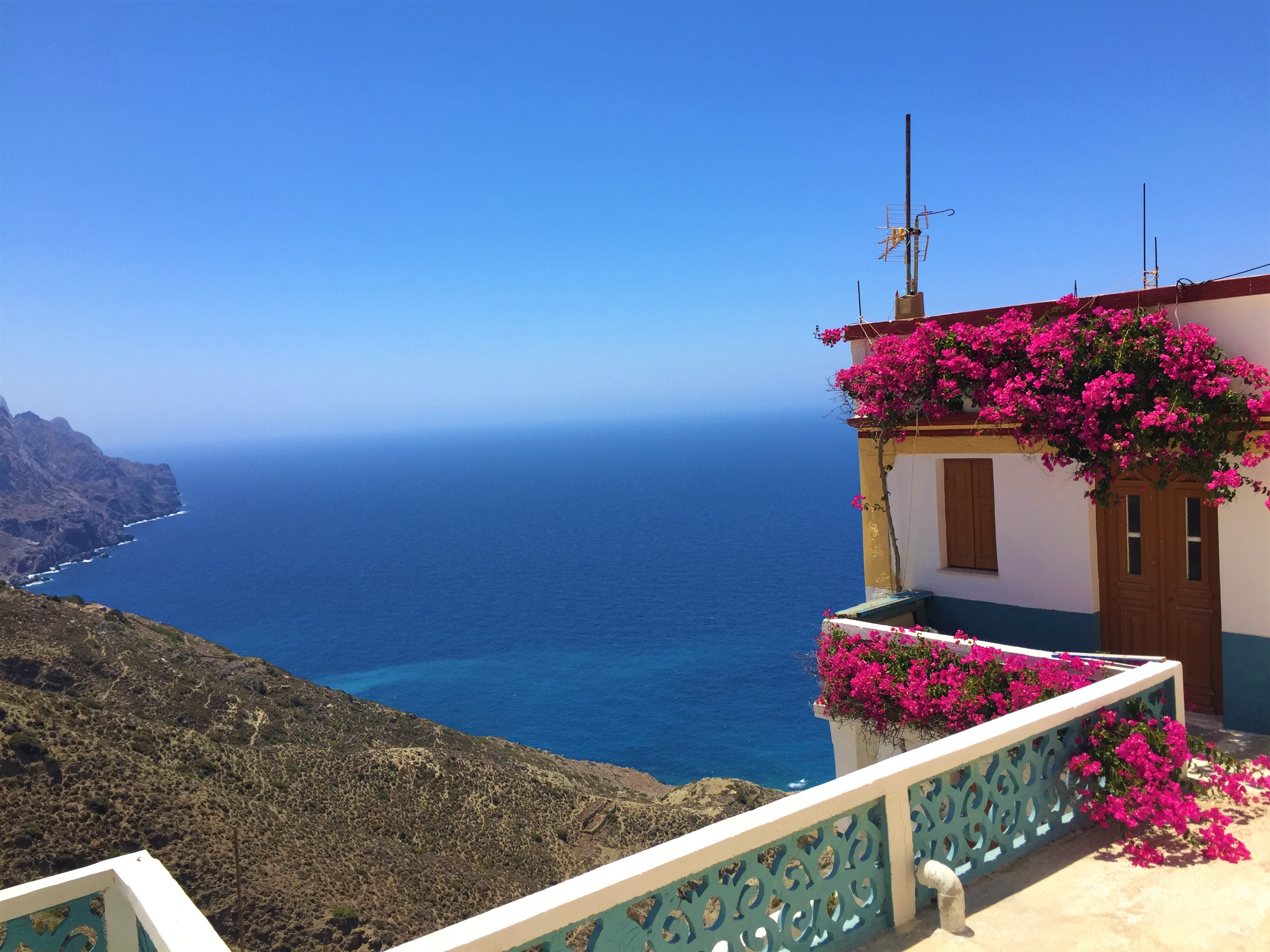
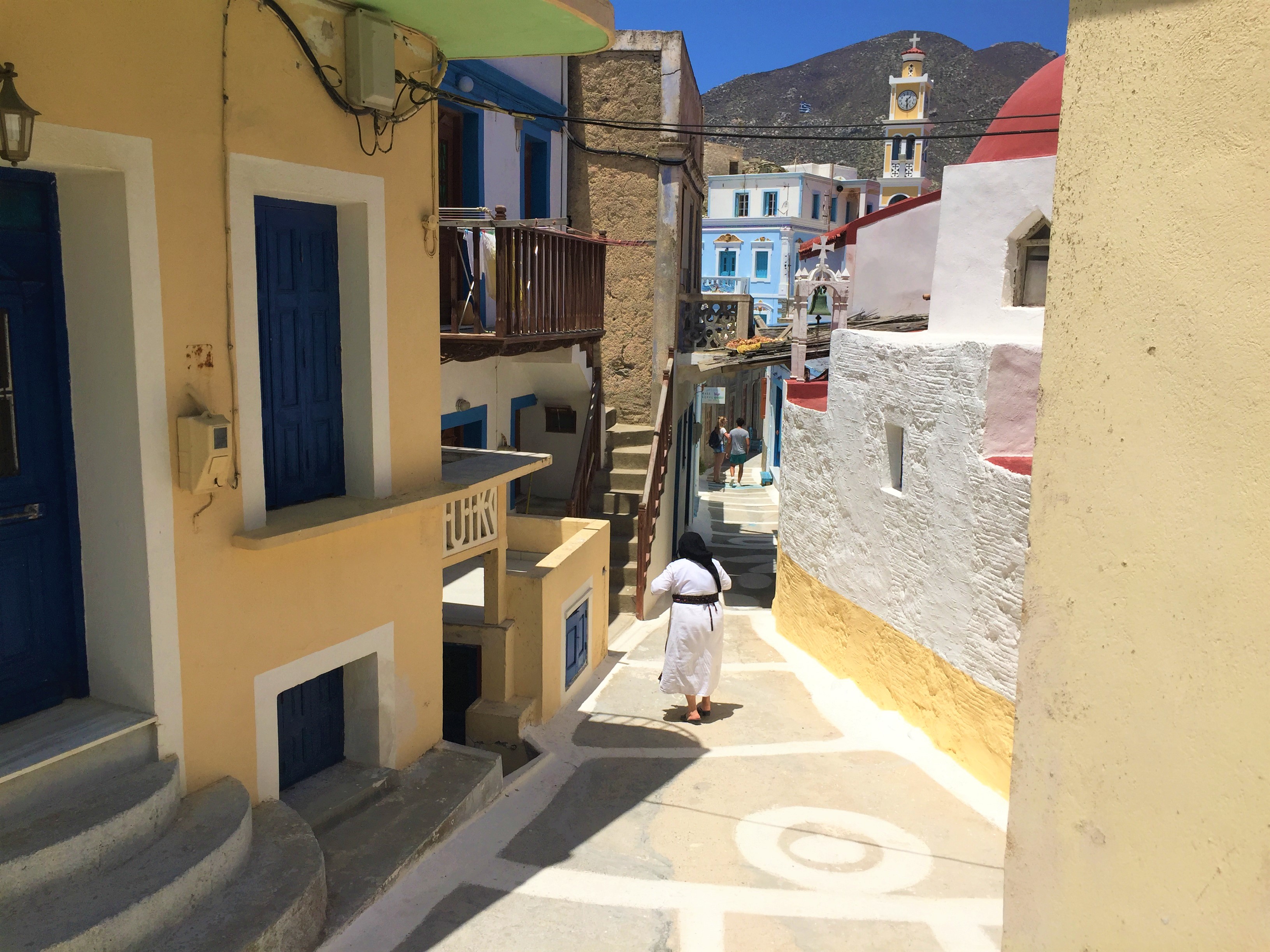
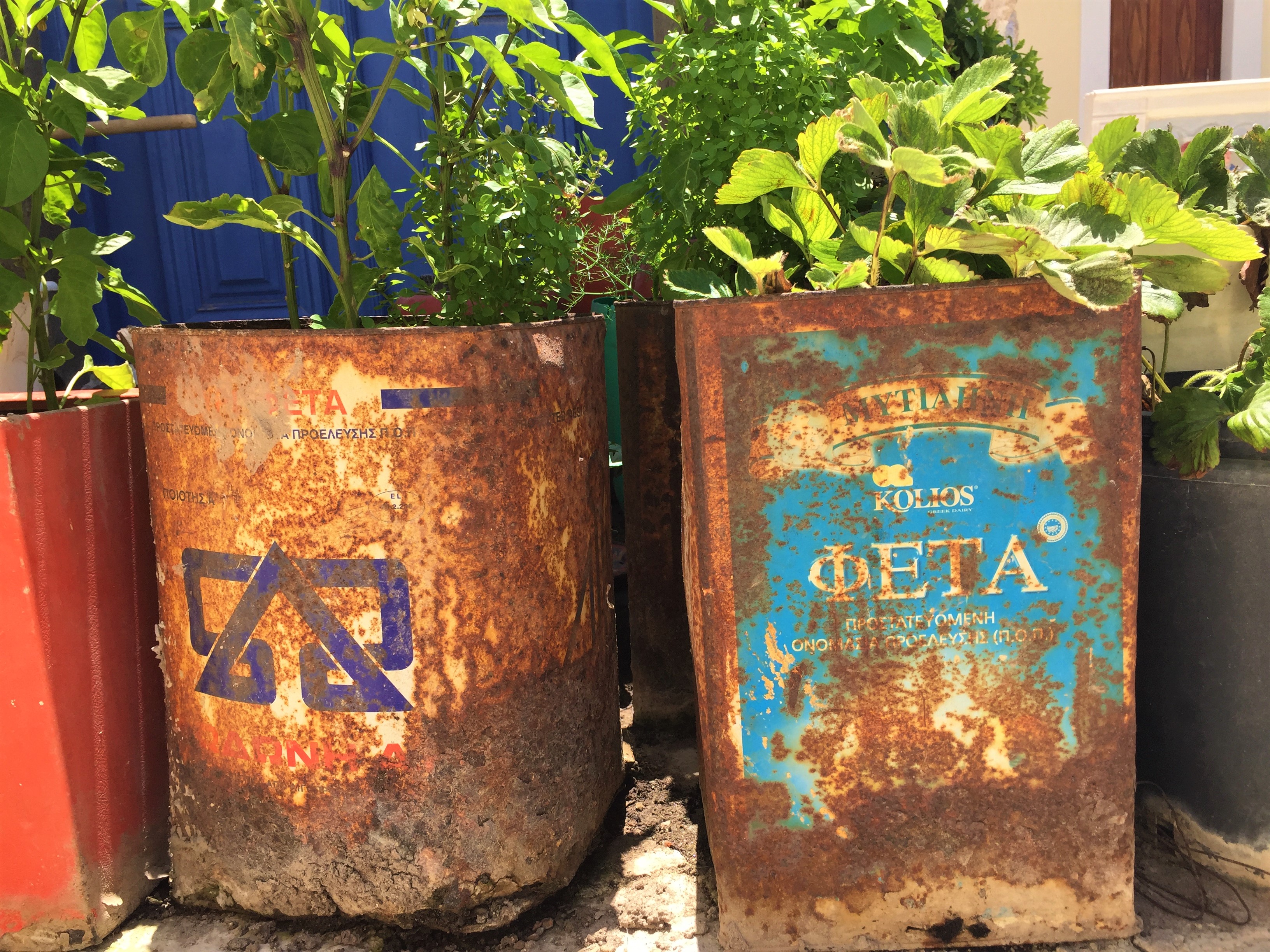
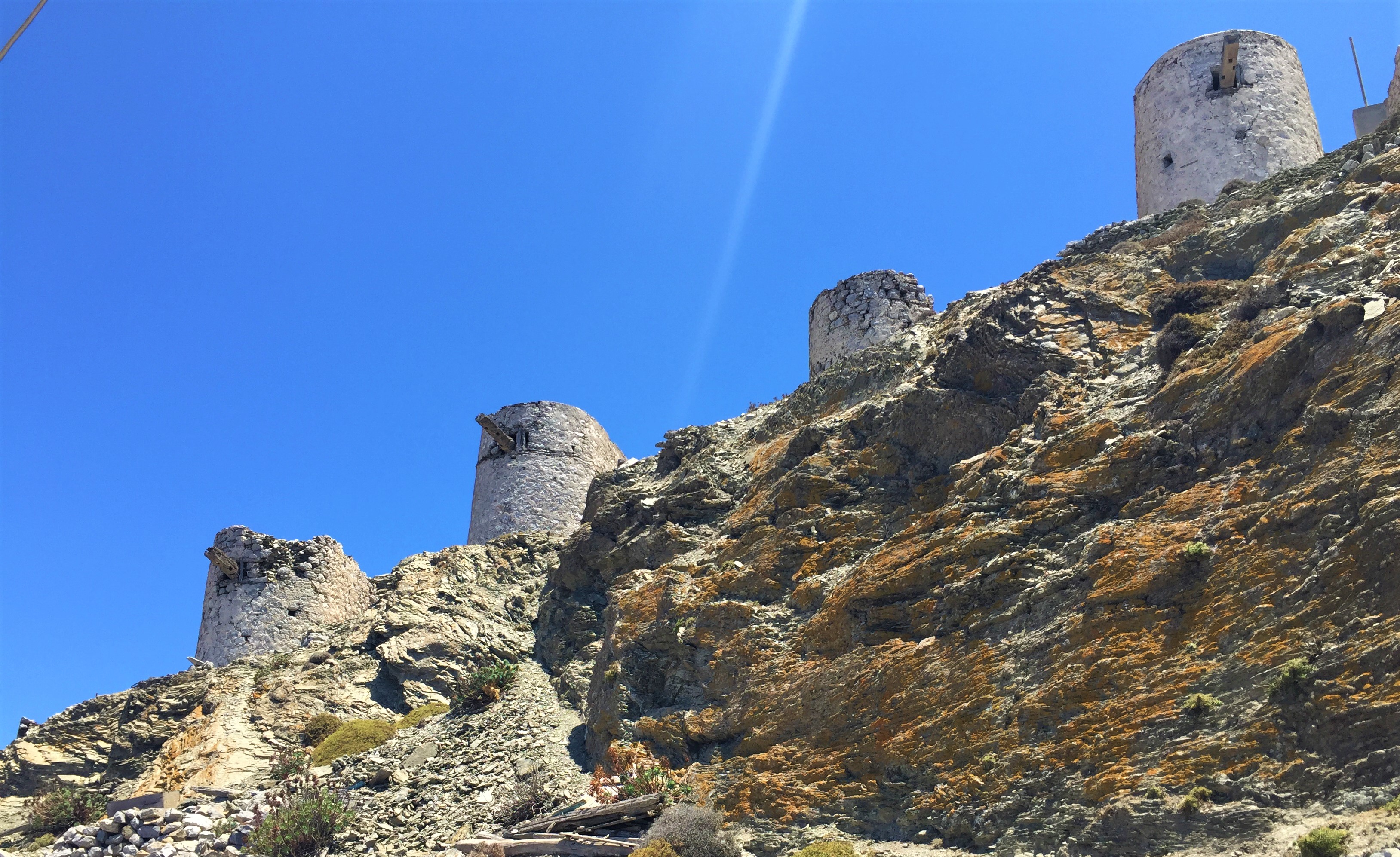
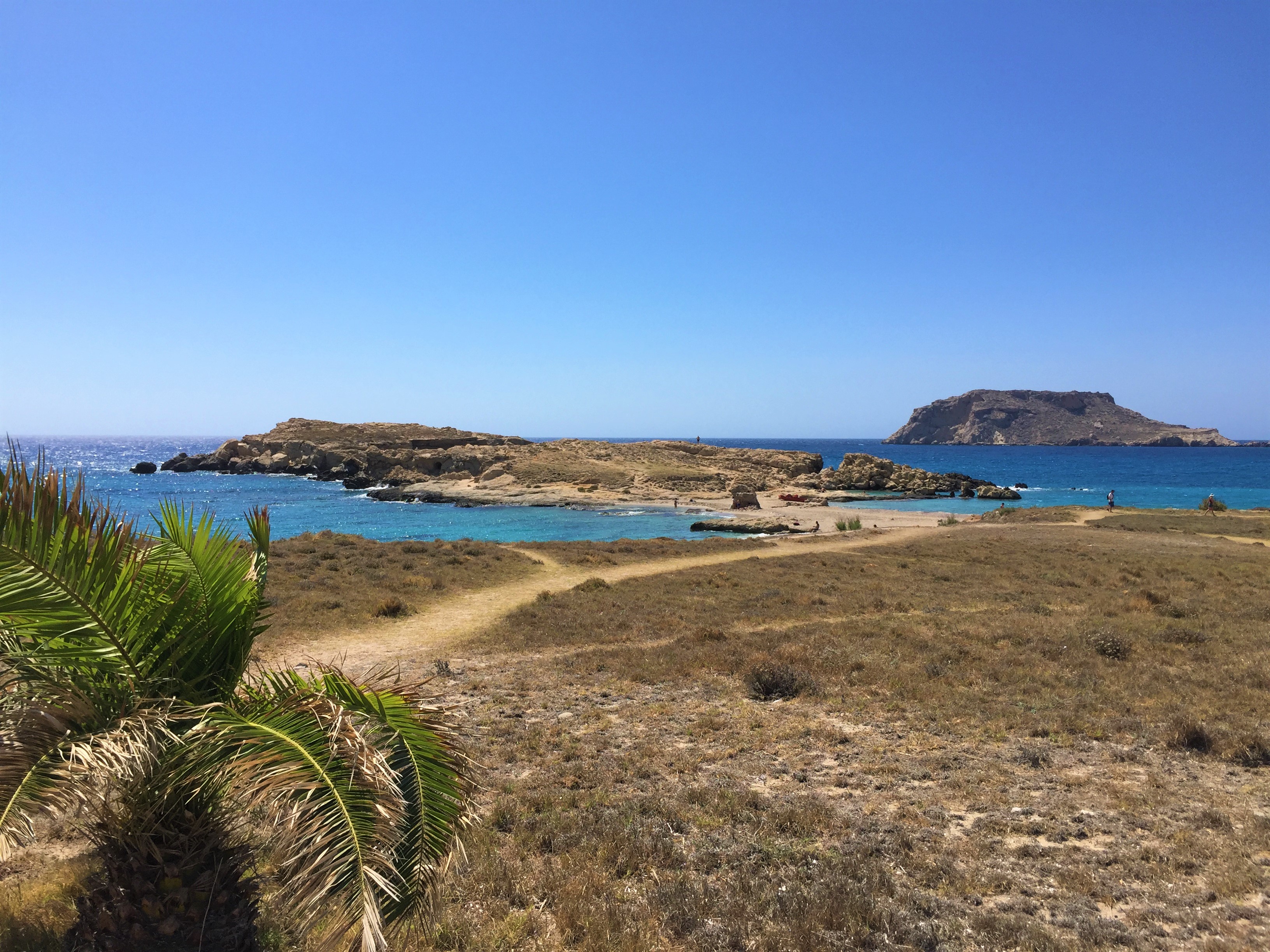
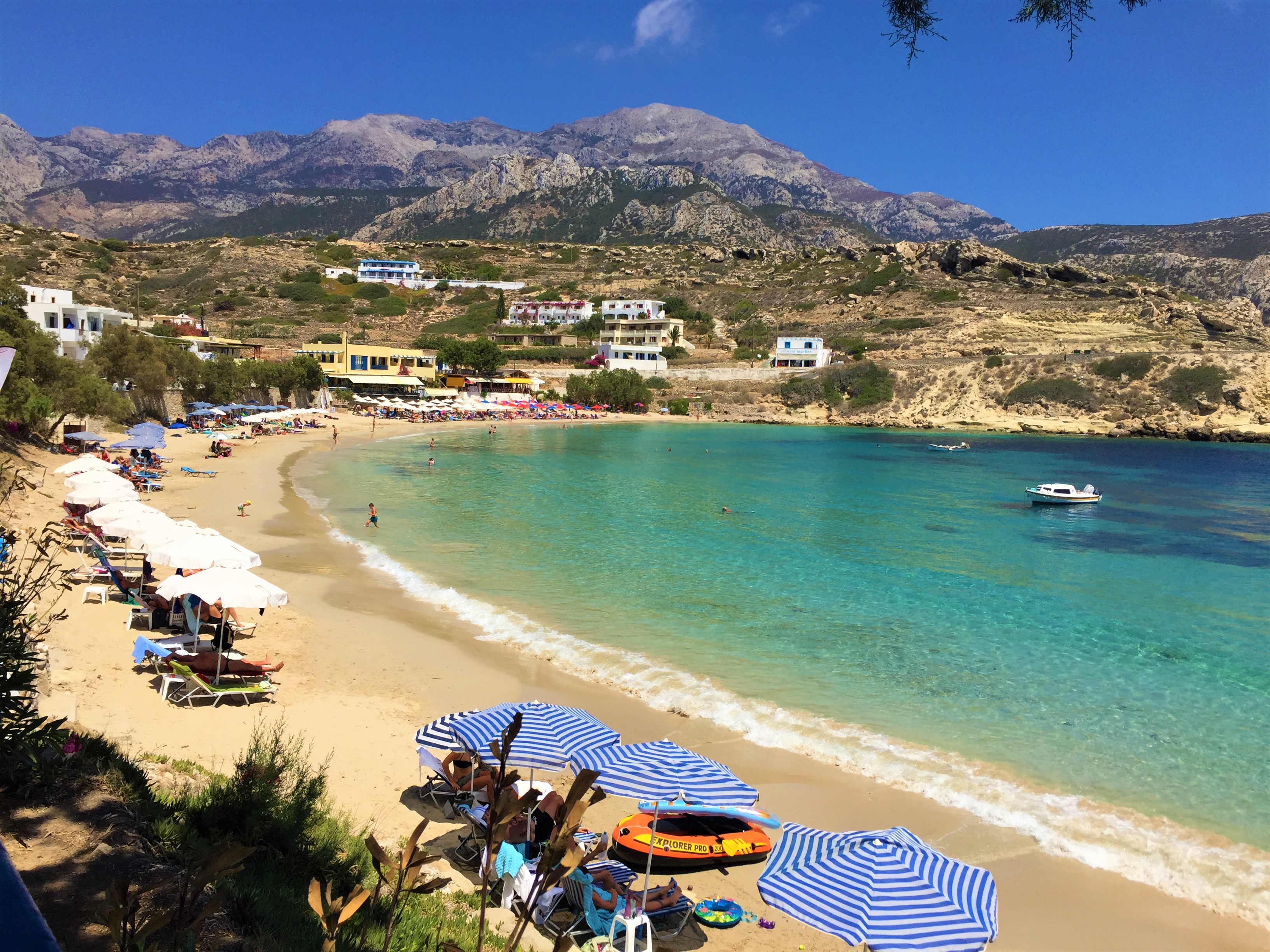


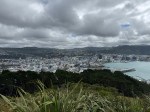
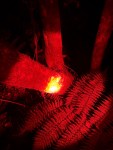
Oh wow it’s beautiful! I’ve been thinking of Greece as our future family holiday. I’ll keep this place in mind. Cheers!
LikeLiked by 1 person
Cool!
LikeLike
I love the looks of this island. If I ever go over that way, this is where I will plan to stay.
LikeLiked by 1 person
Wow! This place looks like paradise, I want to visit this place too now, but I promise to keep it a secret
LikeLiked by 1 person
Good! Do not talk about the beach😉
LikeLiked by 1 person
why? is it because it is too perfect to share and a real secret? hehe
LikeLiked by 1 person
Yes! I would say that I hope as many as possible go there, the island is dependant on tourism.
LikeLike
It looks beautiful! 🙂
LikeLiked by 1 person
I have not been to this island….yet… but it looks like a gem! I have to keep adding to my Greece list!
LikeLiked by 1 person
It is a bit of a hiddem gem for sure👍
LikeLiked by 1 person
We love Karpathos! Thanks for reposting, looking forward to our next visit.
LikeLike